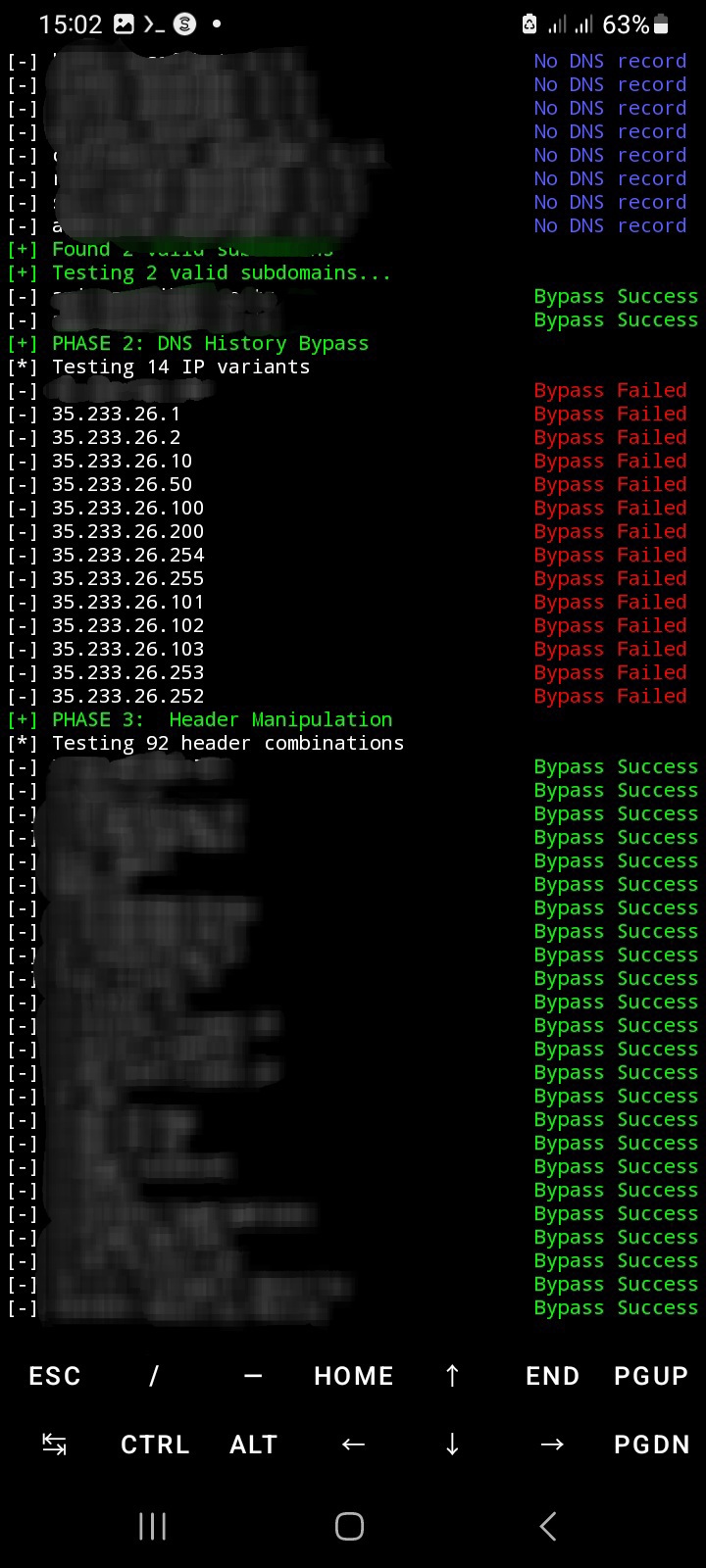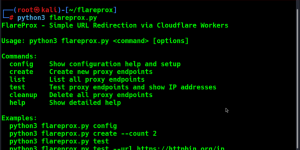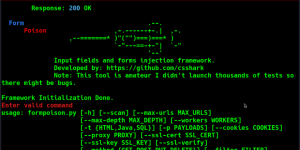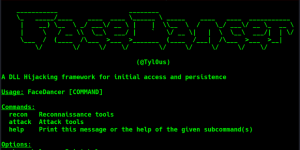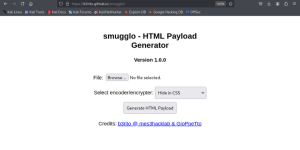Offensive Security Tool: EvilWAF – Web Application Firewall Bypass Toolkit
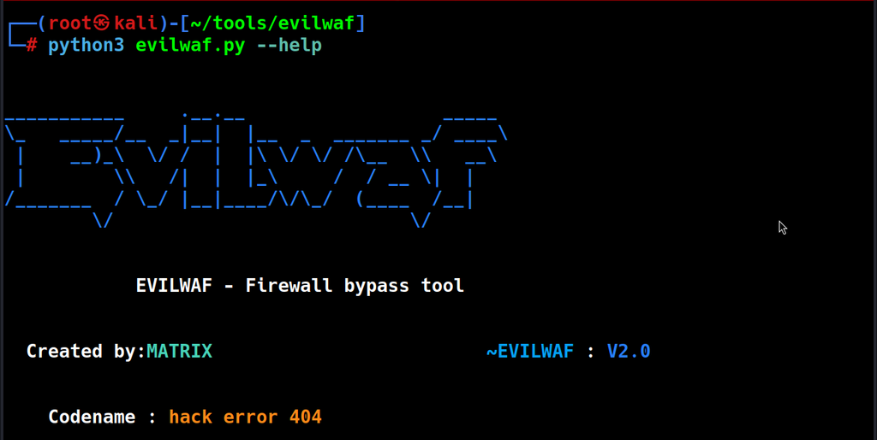
Reading Time: 2 Minutes
EvilWAF – Web Application Firewall Bypass Toolkit
EvilWAF, developed by matrixleons, is an advanced firewall bypass and fingerprinting tool designed to detect and bypass Web Application Firewalls (WAF). It supports multiple evasion techniques for comprehensive security assessment.
Key Features
- WAF Fingerprinting: Identify and detect specific WAF solutions
- Multiple Bypass Techniques:
- Header Manipulation
- DNS History Analysis
- Subdomain Enumeration
- Firewall Evasion: Advanced methods to bypass security controls
- Comprehensive Scanning: Multi-technique approach for maximum effectiveness
See Also: So you want to be a hacker?
Offensive Security and Ethical Hacking Course
Supported WAF Detection and bypass
Cloudflare, Akamai, Imperva, ModSecurity, and more
WAF Bypass Techniques
1. Header Manipulation
Advanced HTTP header manipulation to evade WAF detection:
- User-Agent Rotation: Cycle through different browser signatures
- X-Forwarded-For Spoofing: Fake originating IP addresses
- Accept-Encoding Manipulation: Alter compression headers
- Cookie Parameter Pollution: Overload cookie parameters
2. DNS History Analysis
Leverage DNS records to discover hidden entry points:
- Historical DNS Lookups: Find old IP addresses and subdomains
- CNAME Chain Analysis: Trace domain aliases and redirects
- Passive DNS Replication: Gather intelligence from DNS databases
- Expired Domain Detection: Identify forgotten subdomains
- IP History Reconstruction: Map historical server locations
3. Subdomain Enumeration
Comprehensive subdomain discovery for alternative access:
- Brute-force Discovery: Dictionary attacks on subdomains
- Certificate Transparency Logs: Extract domains from SSL certificates
- Search Engine Scraping: Harvest subdomains from public indexes
- DNS Zone Transfer Attempts: Exploit misconfigured DNS servers
- Reverse IP Lookup: Find all domains on shared hosting
4. HTTP Request Smuggling
Advanced protocol-level attacks to bypass WAF inspection:
- CL.TE Attacks: Content-Length vs Transfer-Encoding conflicts
- TE.CL Attacks: Transfer-Encoding vs Content-Length confusion
- Header Obfuscation: Space and tab variations in headers
- Chunk Size Manipulation: Large and malformed chunk sizes
- Method Override: Smuggled GET, POST, PUT, DELETE requests
- Endpoint Diversification: Target admin panels, APIs, and internal endpoints
5. JWT Algorithm Confusion
Authentication bypass through token manipulation:
- Algorithm “none” Attack: Remove signature verification
- Weak Secret Testing: Common and default JWT secrets
- Key Confusion: Use public keys as HMAC secrets
- Header Injection: KID, JKU, and X5U header attacks
- Timestamp Manipulation: Future expirations and fixed timestamps
- Role Escalation: Admin and superuser claim injection
6. GraphQL Query Batching
Exploit GraphQL features to evade detection:
- Query Batching: Multiple queries in single request
- Array Batching: ID arrays with injection payloads
- Mutation Batching: Combined login and privilege escalation
- Introspection Abuse: Schema discovery with injection
- Alias Attacks: Multiple query aliases with different parameters
- Variable Manipulation: SQL injection through GraphQL variables
7. gRPC/Protobuf Bypass
Binary protocol attacks to evade content inspection:
- Protocol Confusion: Mix gRPC, Protobuf, and REST content types
- Binary Encoding: SQL injection in binary payloads
- Content-Type Manipulation: Various gRPC content type headers
- Cloud Provider Mimicry: AWS, Google, and Azure gRPC headers
- WebSocket Protocol: gRPC-Web and WebSocket protocol attacks
- Proxy Header Injection: Combine gRPC with proxy headers
See Also: Offensive Security Tool: HExHTTP
Installation
Method 1: Clone from GitHub (Recommended)
git clone https://github.com/matrixleons/evilwaf.git cd evilwaf pip3 install -r requirements.txt python3 evilwaf.py -d https;//site.com -o results.json(Recommended) python3 evilwaf.py -d site.com -o results.json python3 evilwaf.py -d site.com / https://site.com [ Tool output example] [+] PHASE 2: DNS History Bypass [*] Testing 14 IP variants [-] 35.187.93.140 Bypass Success [-] 35.187.93.1 Bypass Failed [-] 35.187.93.2 Bypass Failed [-] 35.187.93.10 Bypass Failed [-] 35.187.93.50 Bypass Failed [-] 35.187.93.100 Bypass Failed [-] 35.187.93.200 Bypass Failed [-] 35.187.93.254 Bypass Failed [-] 35.187.93.255 Bypass Failed [-] 35.187.93.101 Bypass Failed [-] 35.187.93.102 Bypass Failed [-] 35.187.93.103 Bypass Failed [-] 35.187.93.253 Bypass Failed [-] 35.187.93.252 Bypass Failed Docker Installation docker build -t evilwaf . docker run -it evilwaf -d example.com *****done*****
Disclaimer
Important: Read This Before Using EvilWAF
- This tool is designed for authorized security testing only
- You must have explicit permission to test the target systems
- Intended for educational purposes, security research, and authorized penetration testing
- Not for malicious or illegal activities
- Users are solely responsible for how they use this tool
- The developers are not liable for any misuse or damage caused
- Ensure compliance with local, state, and federal laws
Website Features:
- Historical DNS records
- IP history for domains
- Subdomain enumeration
- Free tier available Usage: Search for domain → View DNS History
Website Features:
- IP History lookup
- DNS record history
- Reverse IP lookup
- Completely free Tools:
- IP History: https://viewdns.info/iphistory/
- Reverse IP: https://viewdns.info/reverseip/
Website Features:
- Historical DNS data
- Reverse IP lookup
- Domain history
- Free limited queries
Website Features:
- Reverse IP lookup
- Historical WHOIS
- Free API limited.
Clone the repo from here: GitHub Link


